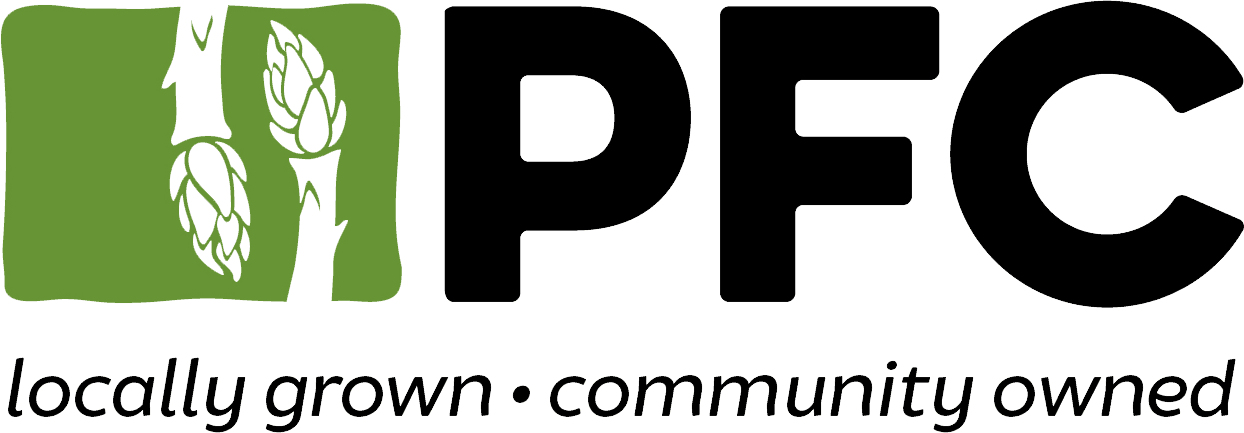Shopping for healthy foods can be a daunting task when so many convenience meals are at our fingertips. Excuses to not shop for fresh foods usually include, “The food goes bad too quickly,” “I don’t have enough time to cook,” or, “It’s too expensive.” Now that 2017 is in full swing, it’s time to let go of the excuses and start nourishing our precious bodies and minds with healthy foods. The first step to becoming healthier without breaking the bank is to learn how to make the right choices when purchasing fresh foods.
Healthy Eating Tips:
- First, arrive at the store prepared. Make a list of all the groceries you need beforehand and stick to that list. This will reduce any spontaneous purchases. Also, don’t go grocery shopping on an empty stomach, or you may wind up buying that extra Snickers bar or bag of chips you definitely don’t need.
- Buy foods in bulk so you only get what you need. Health stores (like the PFC Natural Grocery and Deli) offer various items such as flours, grains, seeds, nuts, spices, dried fruit, nut butters, oils, and even liquid soaps. My favorite things to get in bulk that significantly reduce my bill are flours, oats, quinoa, nut butters, spices, coconut flakes, and coffee. Plus, buying in bulk reduces packaging, which makes for less waste and a smaller carbon footprint. For a double whammy, bring your own jars or reusable bags!
- Buy fresh produce that doesn’t age quickly. Produce with thick or hard skins/peels typically last longer. Some examples include oranges, cantaloupes, bananas, squash, potatoes, onions, apples, carrots, and beets. Other good bets include radishes, cabbage, and celery. If you know that you won’t be able to finish certain foods, buying them frozen or canned is also an option (just watch out for high sodium content or excessive preservatives).
- It’s time to start participating in Meatless Mondays! Cutting down on dairy and meat products can help lower food costs. Not eating meat or dairy once or twice a week (or more) will not only save money, but is good for your health and for the environment.
- Make your own snacks. Making your own trail mix (there’s that bulk section coming in handy again!), granola bars or popcorn can cut costs while also reducing consumption of toxic preservatives companies use in their products.
- Cut down on buying convenience foods, candy and sugary baked goods. Those can tack on expenses and are usually chock full of toxic chemicals, sodium and sugar. Your body will thank you!
- When buying produce, buy foods that aren’t pre-bagged, pre-washed, or pre-cut. For example, buying a bunch of spinach versus buying a bag of pre-washed spinach reduces your cost by nearly a dollar, which may not seem like much but it really adds up by the time you check out. Not only does this save you money, it also reduces packaging and your carbon footprint.
- When possible, buy from your local farmer’s market. The food doesn’t travel nearly as far as the produce in grocery stores, so it stays fresh longer. Plus, you’ll be helping stimulate your local economy, which is always a plus!
- If going fully organic isn’t an option, try to stick to purchasing organic from the Dirty Dozen. Also check out the Clean Fifteen!
- If you know you won’t be able to eat certain fruits before they go bad, buy dried fruits (in the bulk section) instead, although make sure to check the labels. Dried fruits can be big culprits in terms of added sugar, so make sure the only ingredient is the fruit itself and nothing else.
How to Meal Plan:
All of these strategies will help put fresh food in your fridge while making it affordable. Now, on to tackling the preparation of healthy meals despite that all-too familiar time crunch. Many people are busy with school, work, children, etc., and believe they don’t have time to cook. While that can be true at times, it is possible for busy people to fit in healthy meals if they use the following strategies:
- The most important strategy of all is meal prepping. Sitting down for 15 minutes and deciding the meals you want to make for the following week will erase the temptation of dining out or getting fast food (which, again, increases food costs and is generally unhealthy). When choosing these meals, pick recipes that take only 45 minutes or less to make. A good way to find such recipes is to simply type into a search engine “healthy meals made in 45 minutes or less,” and a plethora of websites will pop up with great recipes. There is no need to buy recipe books any longer with the vast amount of information available on the internet. You’re bound to find something you like!
- After grocery shopping using the methods above, try to set aside two or three hours each weekend and cook all your meals/snacks for the following week. This allows for fast and healthy breakfasts, lunches, snacks and dinners for people on the go. Even if you don’t make every single meal, simply cutting up vegetables and fruits or portioning out ingredients beforehand allows for an easy meal made in no time. With healthy food available at your fingertips, there’s no excuse to eat out and spend that precious cash!
Some of my favorite meal-prepping activities include making hard-boiled eggs and overnight oats for breakfast, stuffing freezer baggies with frozen fruits for quick smoothies, cutting up and portioning out raw veggies and fruits (which can be used for snacks or salads), and making crockpot soups, curry, and grab n’ go homemade snacks (such as energy bites, muffins, or trail mix). Using all of these strategies will effectively stretch your dollar and time, and create a healthier you in the process!







